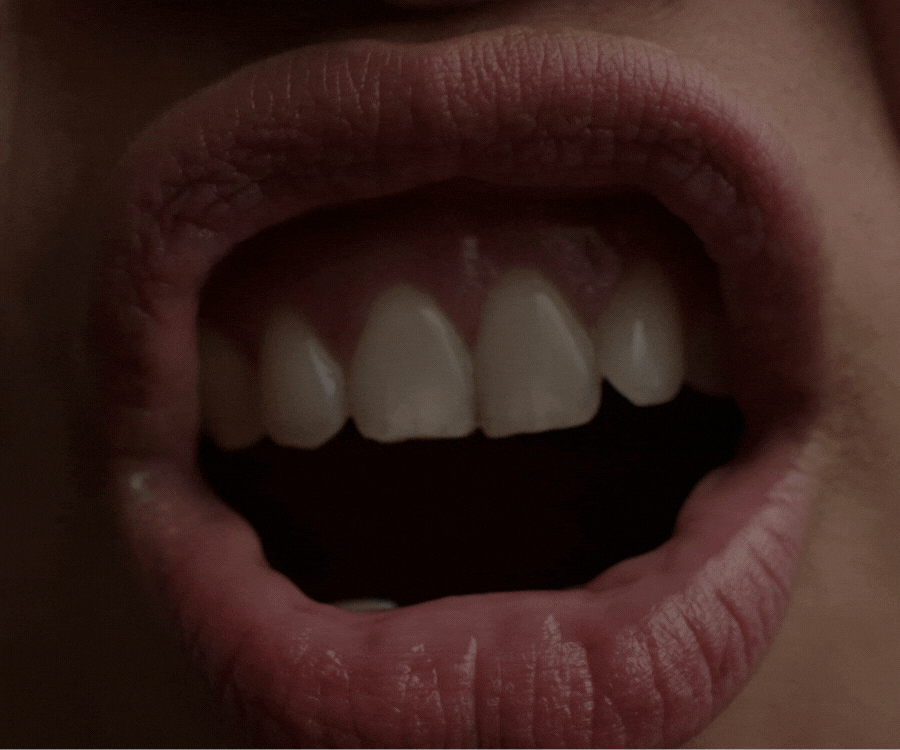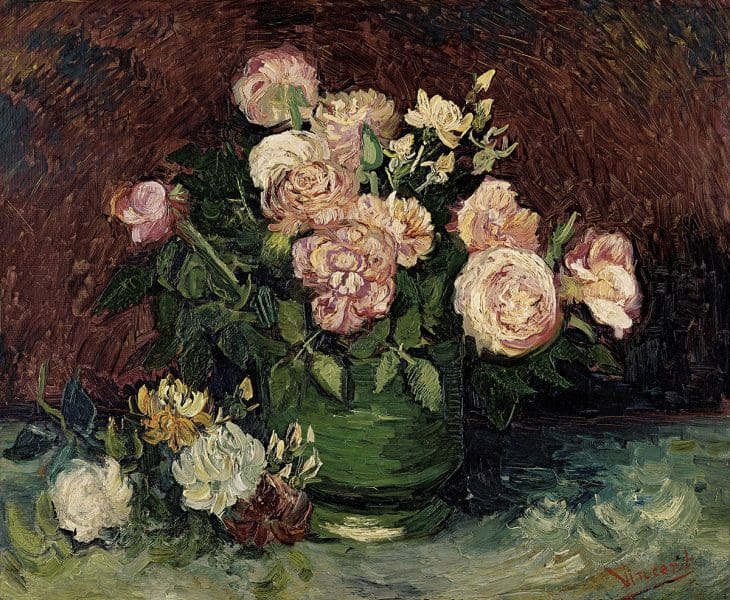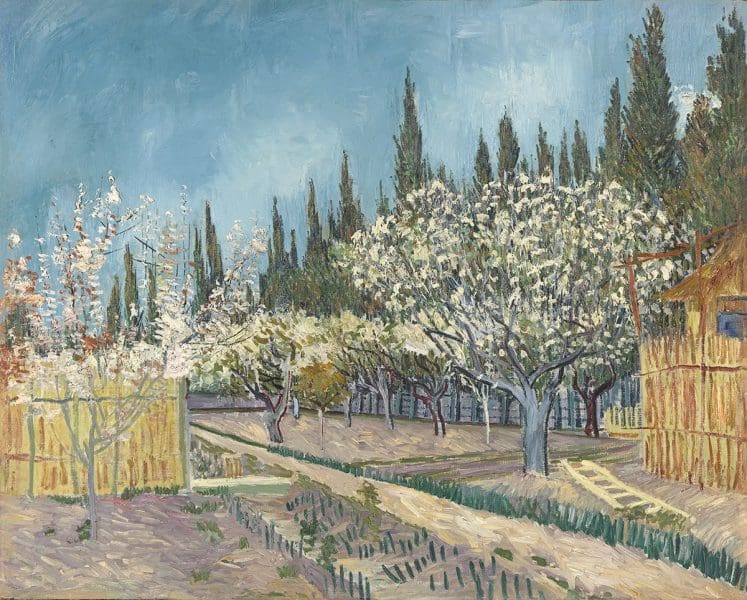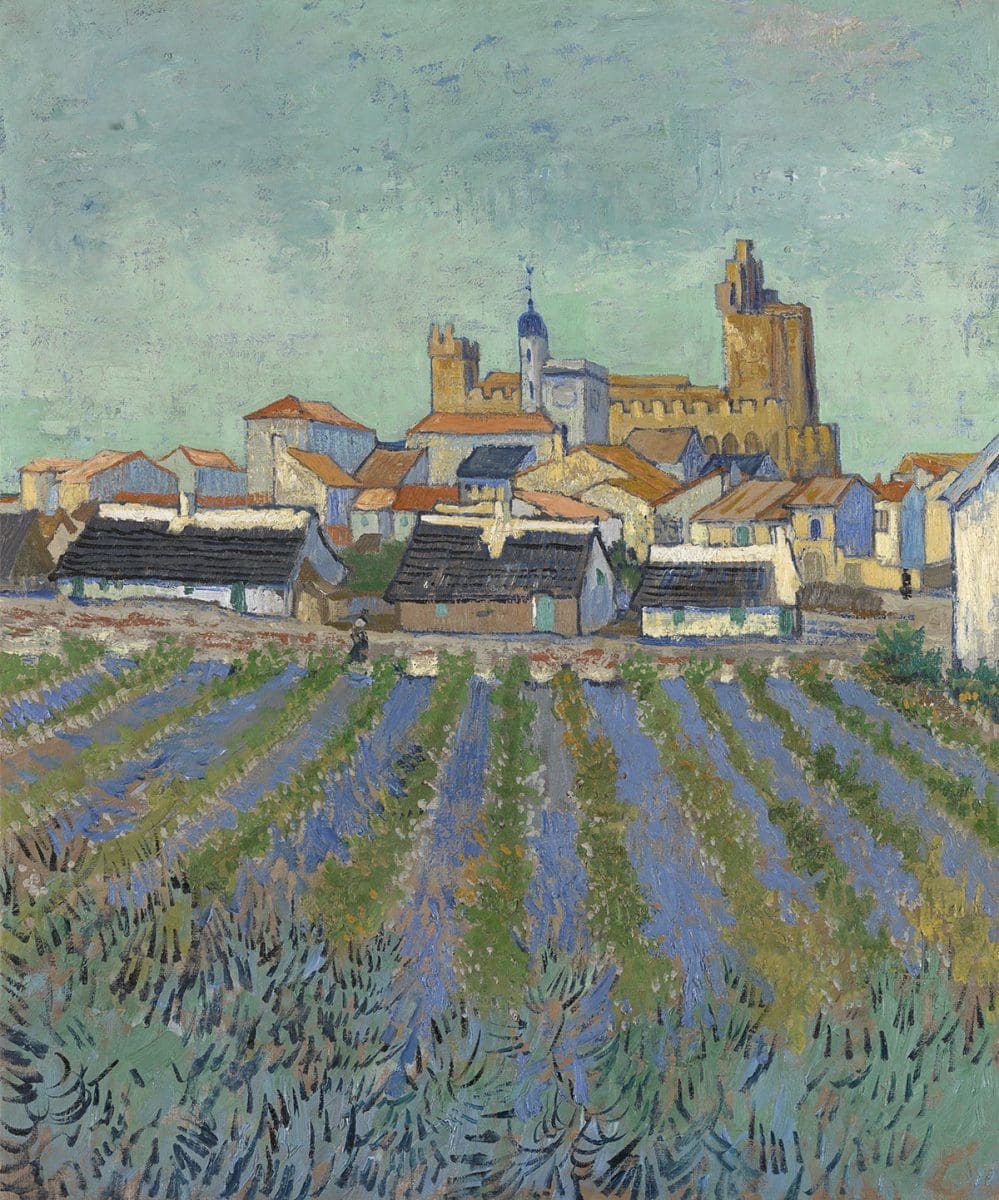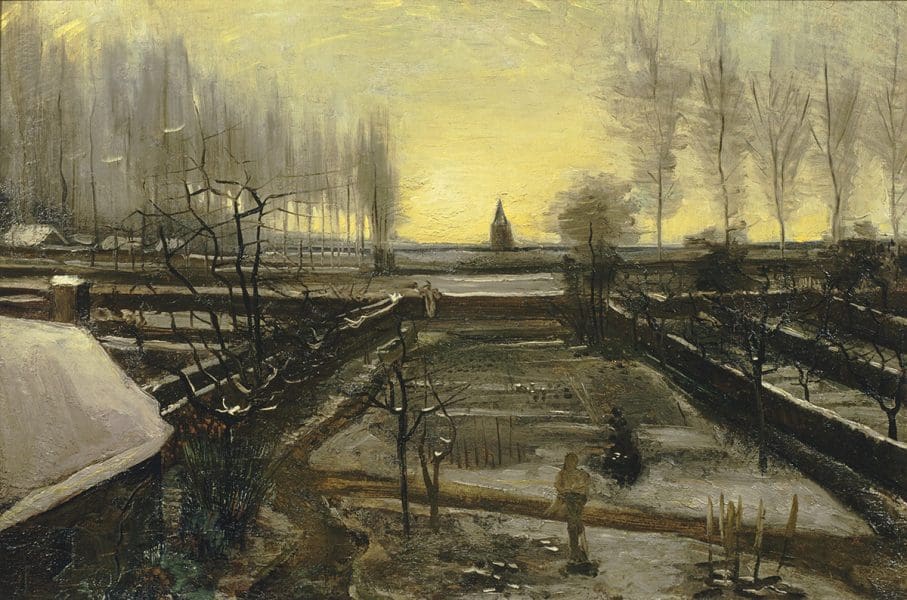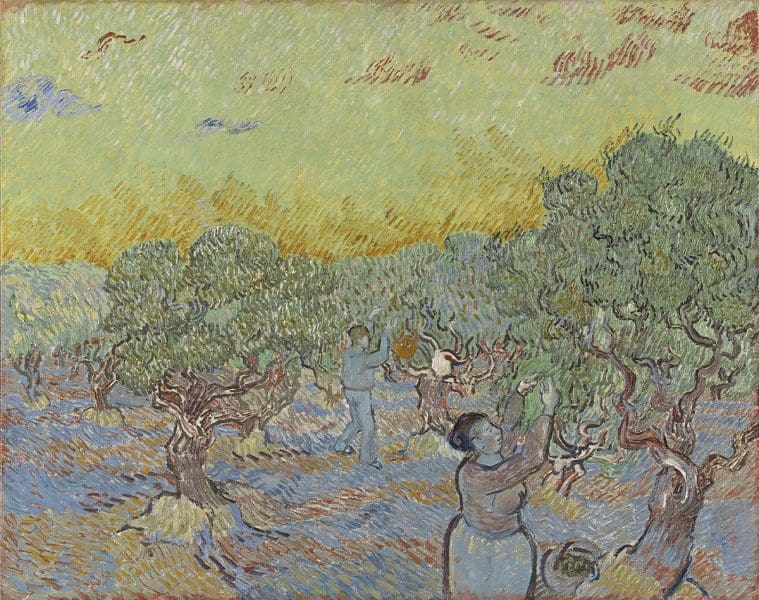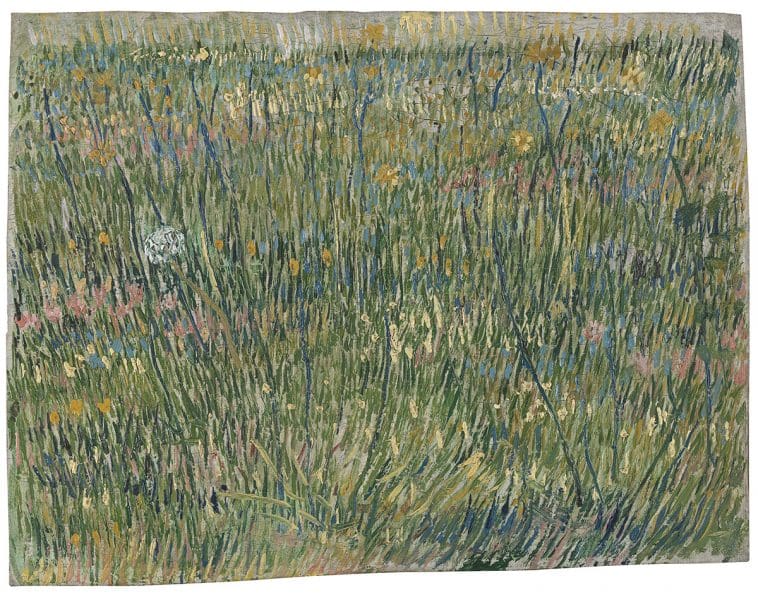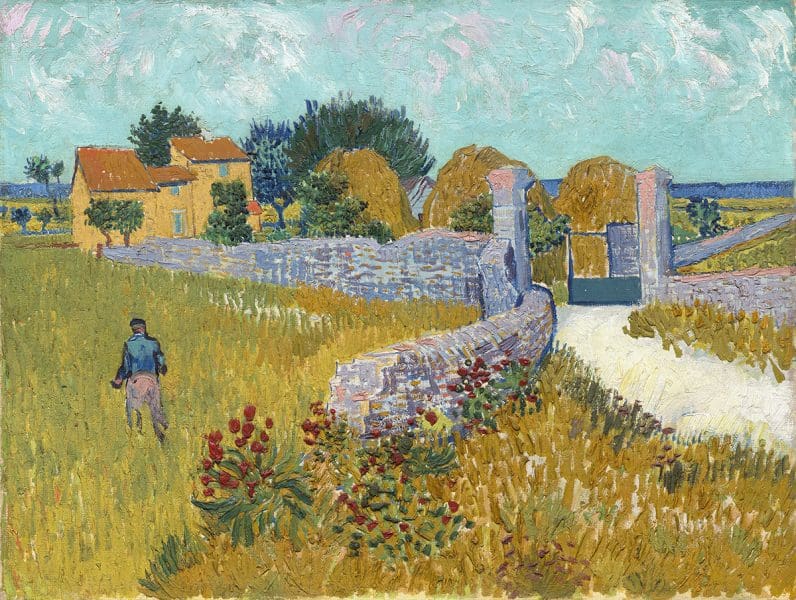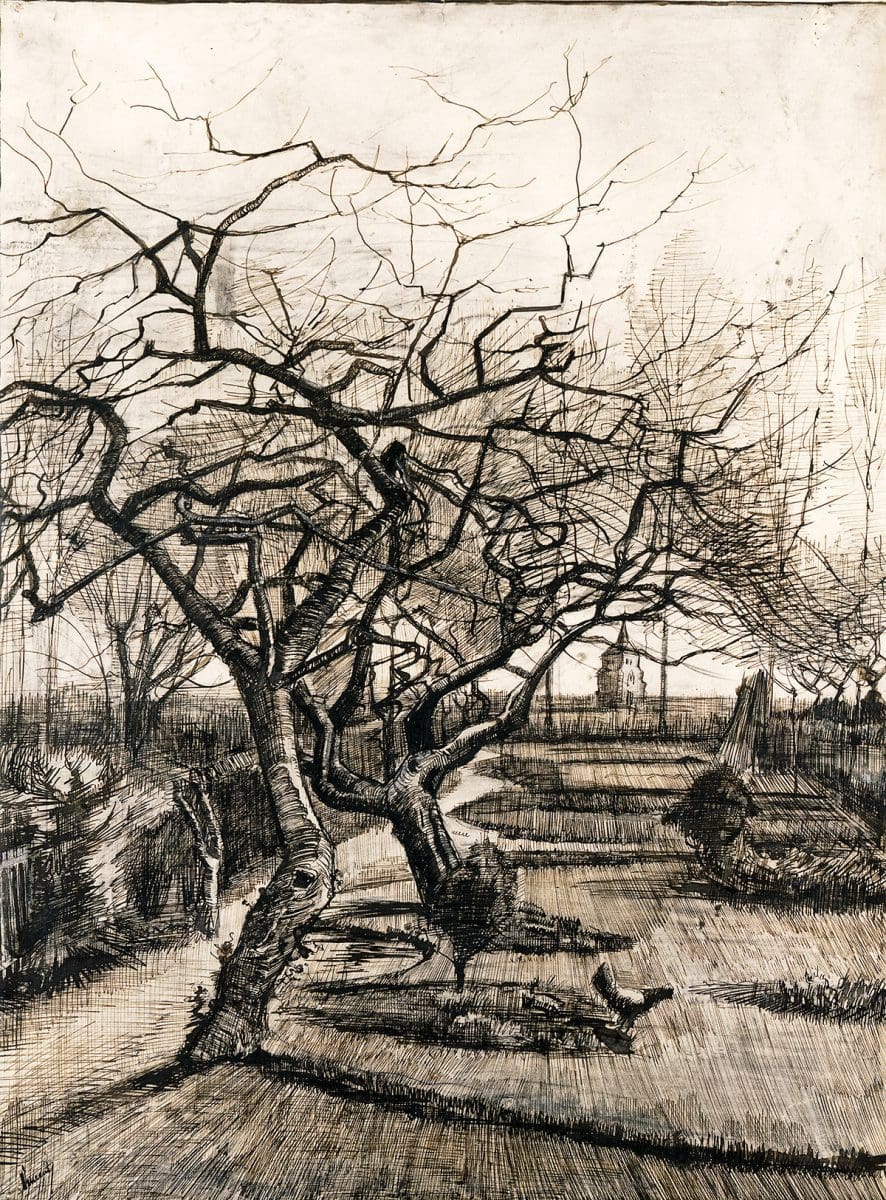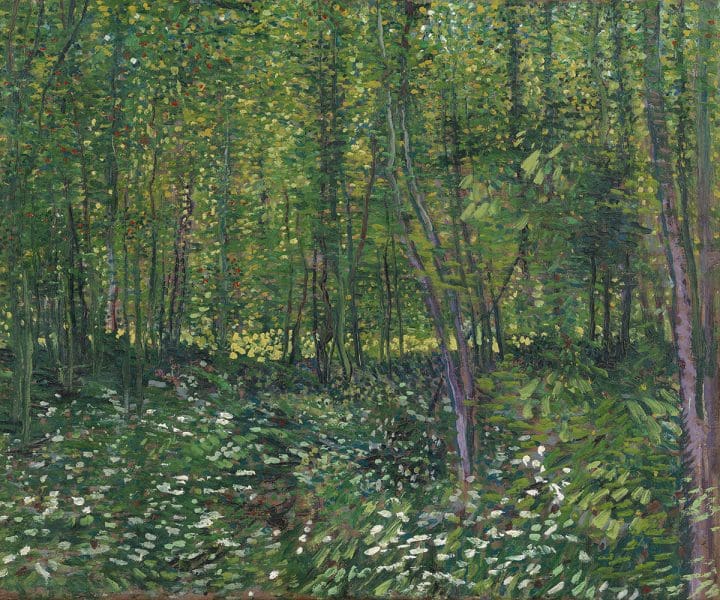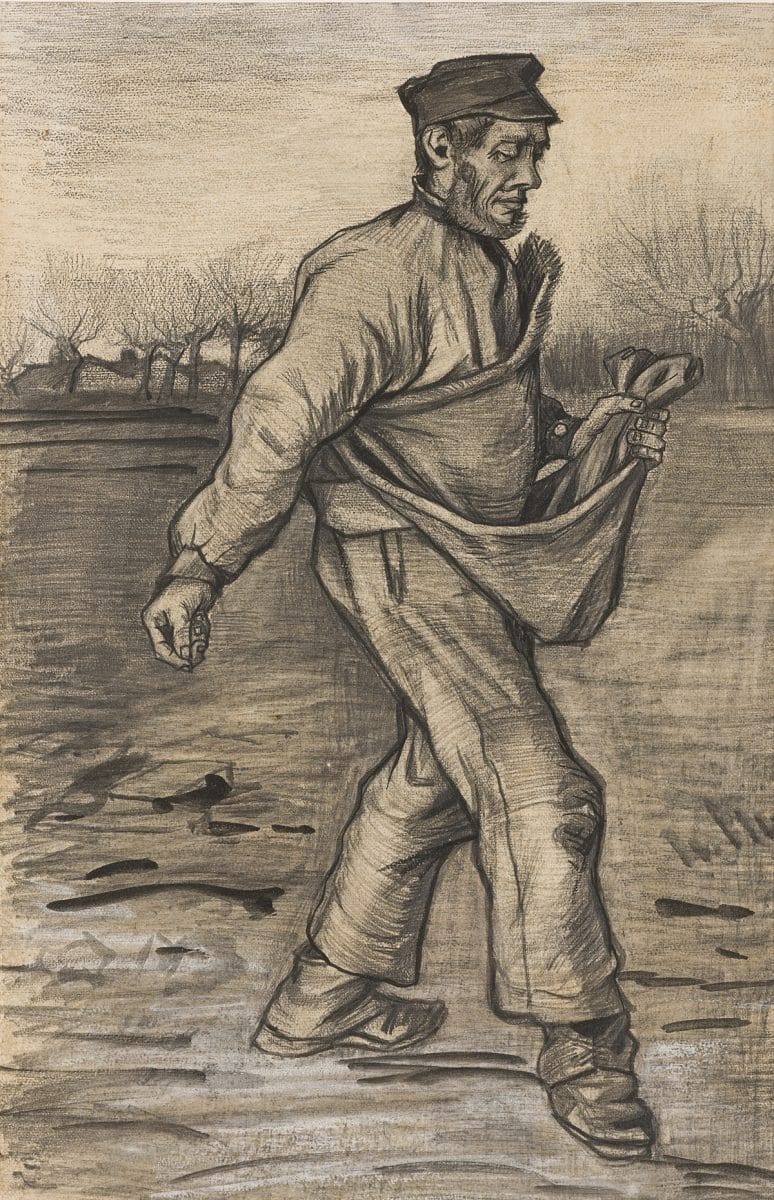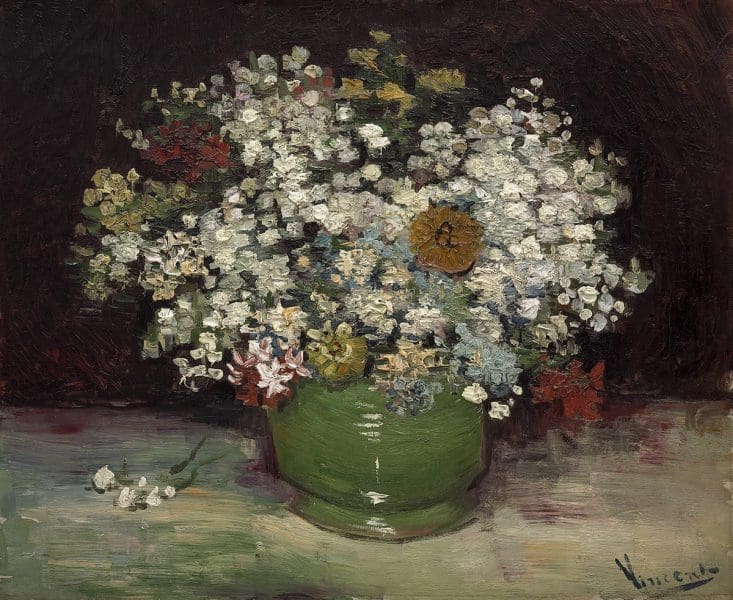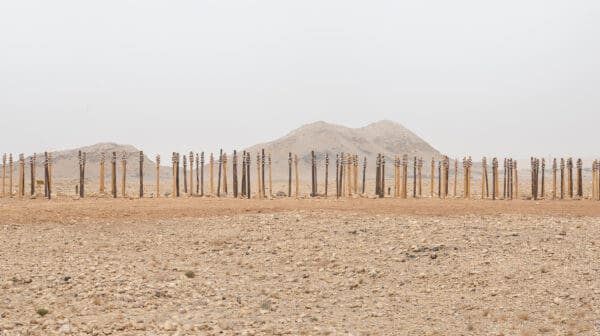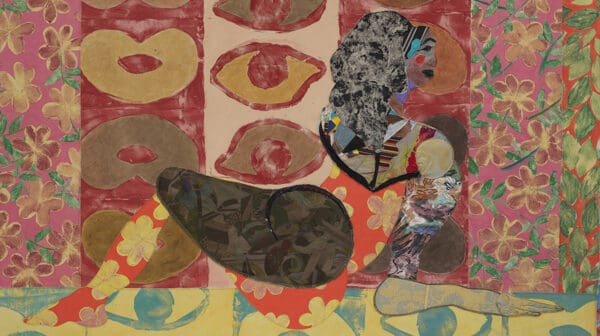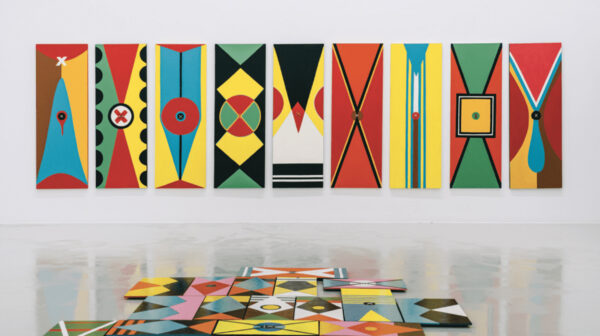With dwindling funds, Van Gogh took to painting at the age of 27, carrying his personal brand of mysticism onto the canvas. He developed an iconography based on the seasons, the cycles of nature, where colours took on symbolic meaning.
Blue denoted the presence of God, while yellow stood in for God’s love.
If you take a closer look at the iconic The Starry Night (not in the show but possibly reproduced on a drink coaster at your next holiday rental) you will notice a profusion of blue and yellow in the sky – shimmering with God – similarly, the windows of the town’s house are lit with yellow. At dead centre at the bottom of the painting, the church is darkened.
This exhibition sees Van Gogh’s struggle with questions of life. The seasons are allegorical – reaping and sowing, represent growth in life and death in harvest. In particular, wheat fields, olive and cypress trees were frequent subjects that allude to this cycle.
Here, 40 paintings and 25 drawings, on loan from the Van Gogh Museum, Amsterdam and the Kröller- Müller Museum, Otterlo are grouped by seasons.
Van Gogh’s early Dutch landscapes are marked by dreariness, take The parsonage garden in the snow, January 1885, Nuenen – he did say once “sorrow is better than joy.” Yet in any cycle, there is always the hope of renewal.
Van Gogh and the Seasons
National Gallery of Victoria (NGV International)
28 April – 9 July


